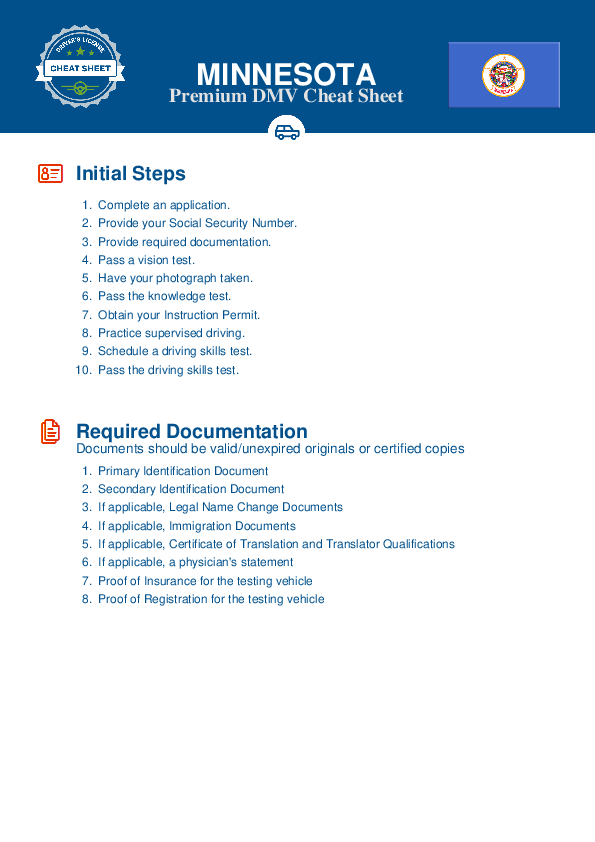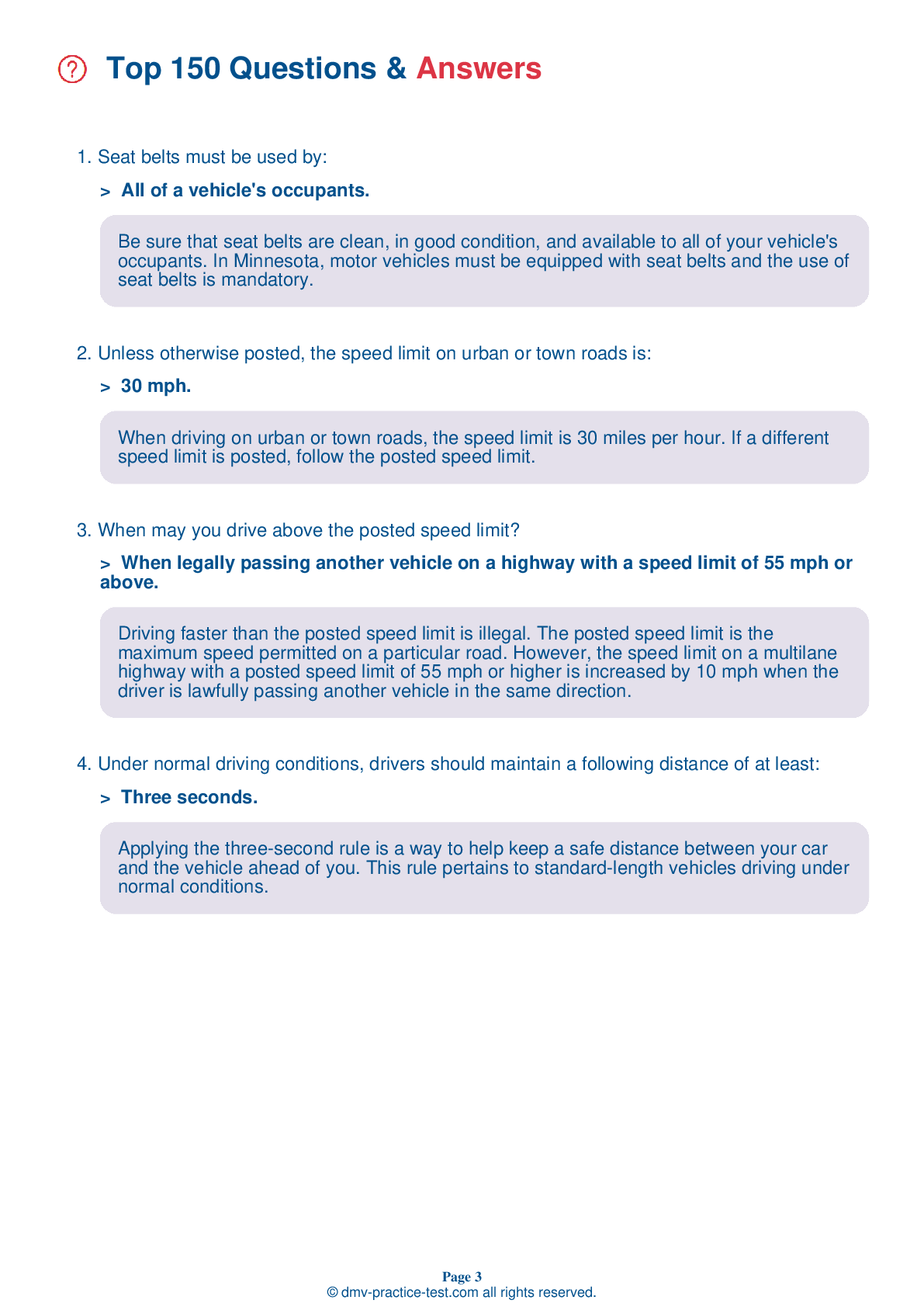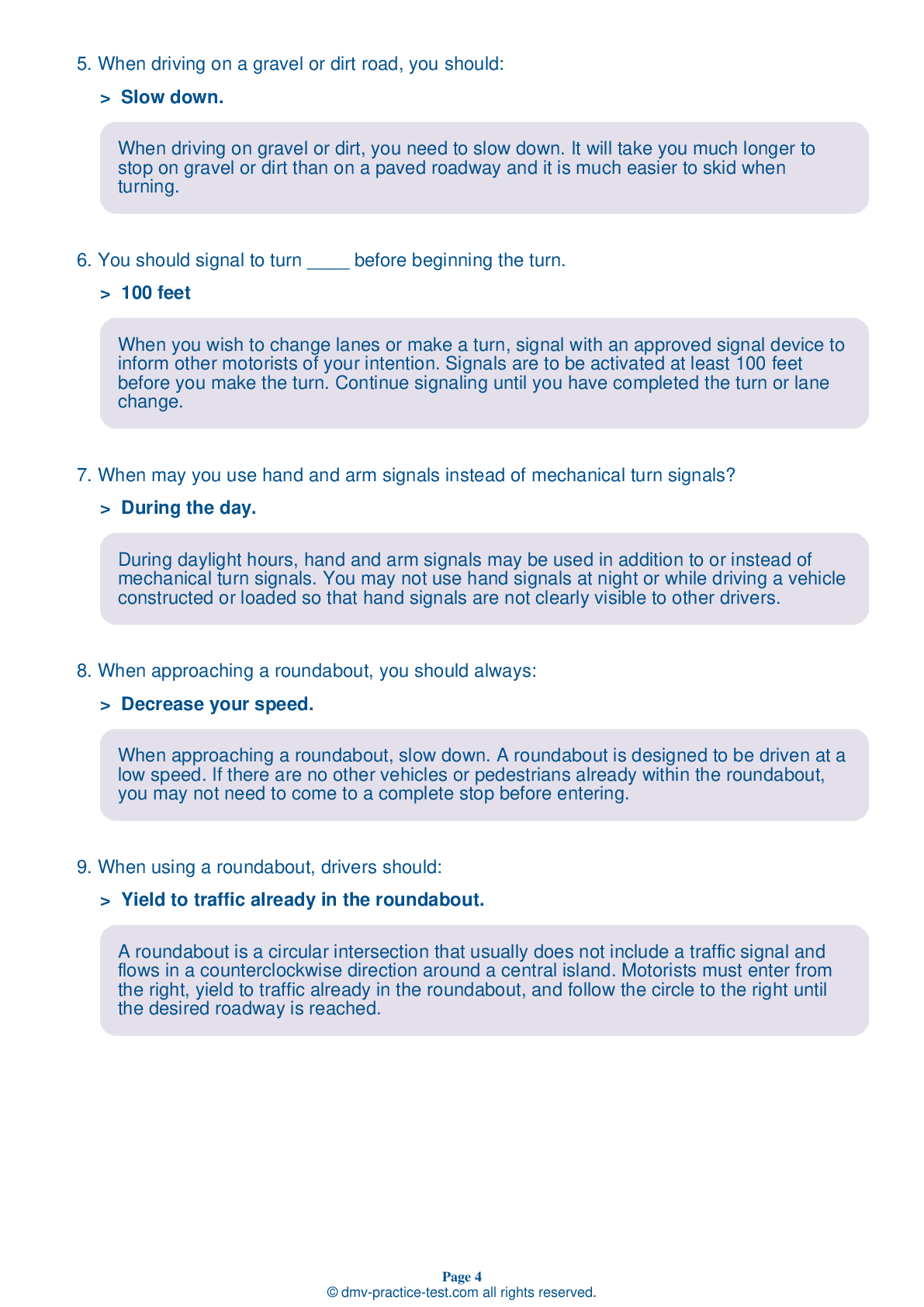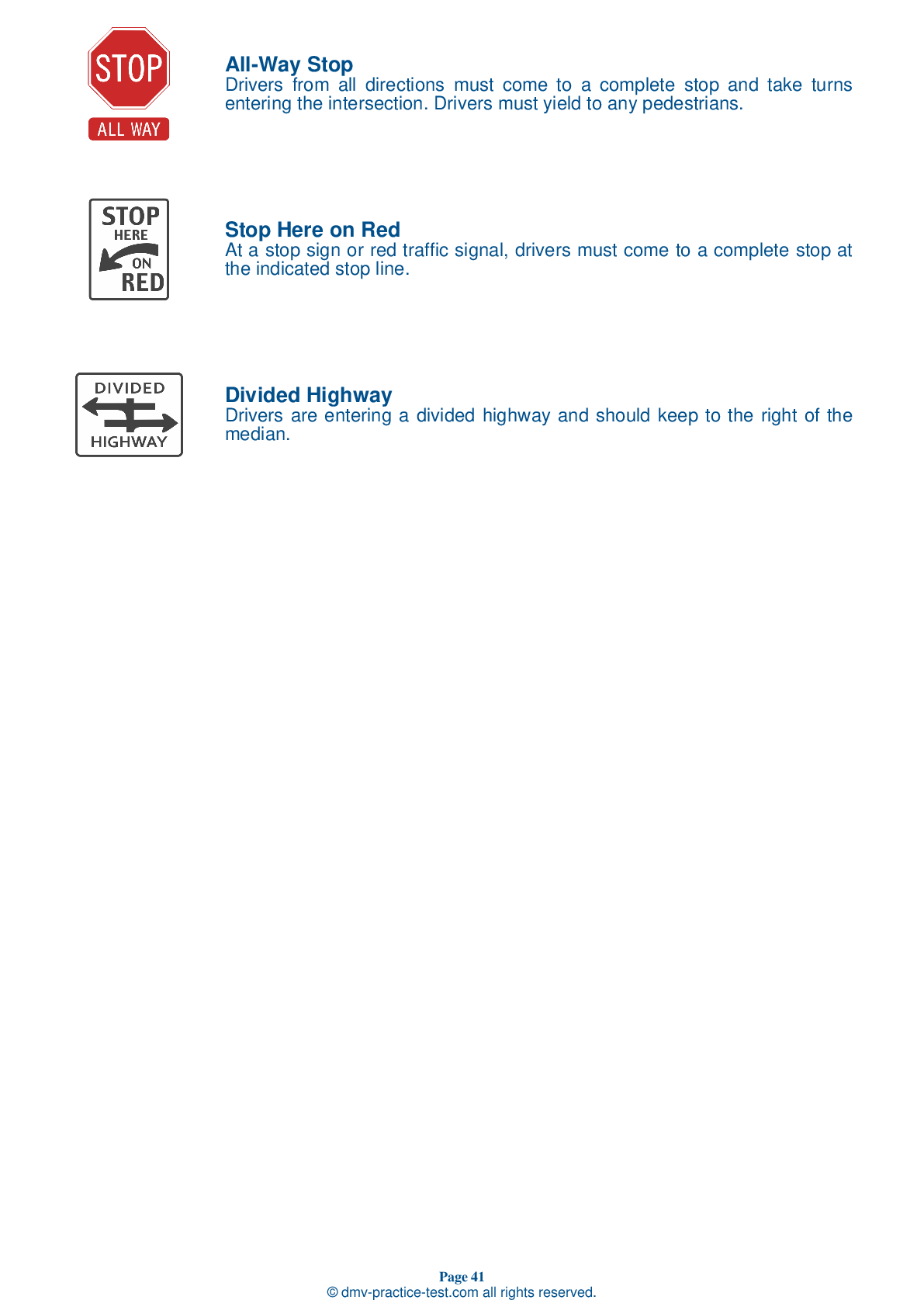FREE Minnesota DMV Practice Test #12
The Minnesota DMV practise examinations have been updated for January 2025. It includes questions based on the Minnesota Driver Handbook's most essential traffic signals and laws for 2025. Use actual questions that are very similar (often identical!) to the DMV driving permit test and driver's licence exam to study for the DMV driving permit test and driver's licence exam.
On the practise exam, each question gets a tip and explanation to help you remember the concepts. The written component of the official Minnesota DMV test will include questions about traffic rules, traffic signs, and driving statutes, as well as knowledge from the Driver Handbook.
To obtain a passing grade, you must correctly answer 32 of the 40 questions. To help you prepare for your instruction permit or driver's licence, take our Minnesota DMV practise test.
The DMV exam is available in several languages.
Using any kind of testing assistance will result in an automatic fail, and the DMV may take additional action against your driver's licence, so stay away from it.
1 . Nighttime is the safest time for cyclists to ride their bikes.
A bicycle is difficult to see in the dark, even when the cyclist is wearing a proper headlight and reflector. Both motorists and bicyclists should be especially alert when driving at night in order to prevent dangerous collisions.
2 . A traffic light displaying a green arrow and a red light means that:
If a green arrow is shown with a red light, you can only drive in the direction of the arrow and only if the intersection is clear.
3 . If worried, nervous, angry, or crying, a driver:
You may not be able to drive well if you are worried, excited, crying, angry, or depressed. Emotions can distract you from your driving because your mind is focused on something else. Take time to calm down and get focused before driving.
4 . If your car breaks down on a highway, you should:
If your vehicle breaks down on the highway, you should signal before carefully exiting the roadway and turning on your hazard flashers. Get as far off the road as possible and park in a location where other drivers can easily see you. Lift your hood to let other drivers know your vehicle is disabled.
5 . Braking distance is affected by:
Factors that can affect braking distance include how fast your vehicle is traveling, the condition of your brakes and tires, and the condition of the pavement.
6 . You are stopped in a line of vehicles waiting at a stop sign. If there is no cross traffic after the vehicles ahead have passed through the intersection, you:
You must always bring your vehicle to a complete stop and yield to approaching traffic before proceeding past a stop sign. Don't feel pressured by surrounding traffic to avoid making a complete stop.
7 . If a transit vehicle is signaling to re-enter the main roadway following a stop, you must:
You must yield to any transit vehicle that is signaling to pull back onto the main roadway after it has stopped to load or unload passengers. Change lanes, slow down, or stop to allow the bus safe re-entry into traffic.
8 . Which of the following about winter driving is not true?
You should not use cruise control on snow, in rain, in fog, or under similar hazardous conditions. Winter is the most difficult driving season and requires extra caution from drivers. It is important to consistently check your antifreeze and windshield washer fluid levels. Using snow tires can increase a vehicle's traction on the surface of slippery roads.
Need Car Insurance? No problem!
Compare the best rates in Minnesota and find a personalized policy that meets your needs.
1. Are You Currently insured ?
2. Married ?
3. Do you own your Home?
4. Do you have more than 1 car ?
5. Have you or a Family Member Honorably Served in U.S. Military ?
6. Your Name
7. Age
8. Zip code
IMPORTANT REMINDER:Auto Insurance is Mandatory to drive in Minnesota. Get covered before you hit the road to avoid any fines.
Ranked by best match



